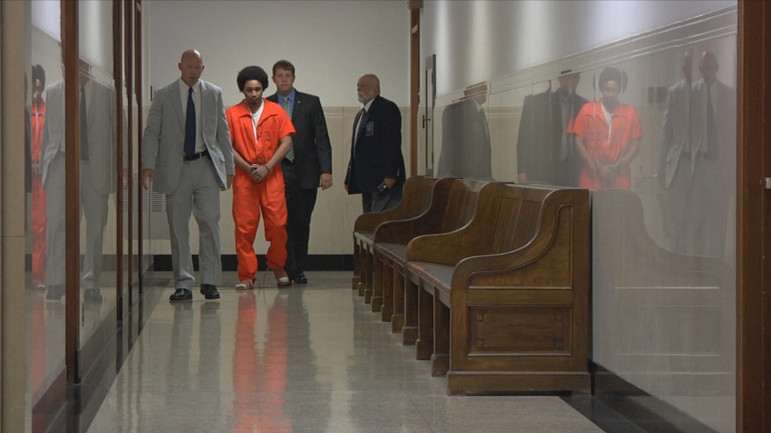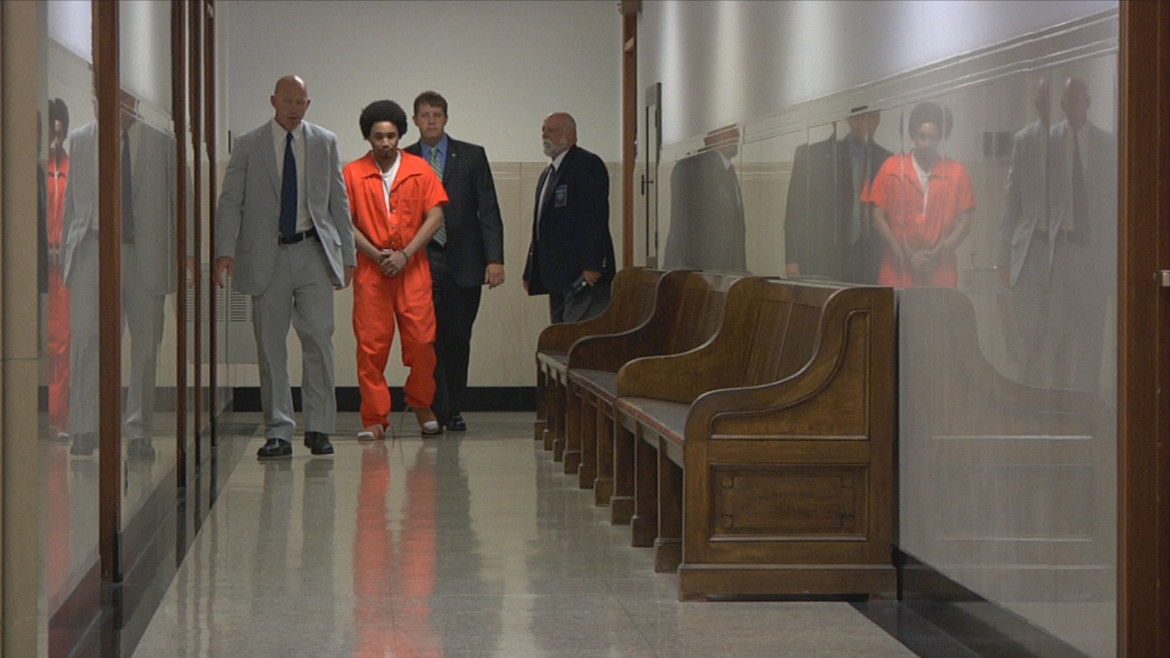
Maurice Haltiwanger in the film THE HOUSE I LIVE IN, an Abramorama release 2012. Photo courtesy of Samuel Cullman.
In January 1961, President Dwight D. Eisenhower referred to the dangers of the military-industrial complex, a network of political and economic relationships among politicians, the military, and the defense industry that threatened to become self-perpetuating and independent of criticism or effective oversight by anyone outside this iron triangle.
The subject of Eugene Jarecki’s The House I Live In is a similarly self-perpetuating entity, the prison-industrial complex, as fueled by America’s so-called “War on Drugs.” The facts are shocking to anyone outside this triangle of politicians, correctional institutions, and private contractors:
- The United States has 5 percent of the world’s population, but 25 percent of the world’s prison population.
- Today, more people in the United States are incarcerated for nonviolent drug offenses than were incarcerated for all crimes in 1970.
- One in eight state employees today works for a corrections agency.
- About 14 percent of drug users in the United States are African American, but 56 percent of those incarcerated for drug crimes are African American.
Any reasonable person, faced with these statistics, might well wonder what is going on. How is it, in an era when many state and local governments are strapped for cash to provide basic services to their constituents, there is still money to arrest people for nonviolent drug offenses (more than 82 percent of drug arrests in 2007 were for possession) and build new prisons to house them? Why does the burden of this war fall so disproportionately on African Americans? And how is it, after 40 years, with more than 45 million arrests and $1 trillion in expenditures, illegal drugs are at least as available in the nation as they were when Richard Nixon first declared war on them in 1971?
Teasing out these answers is Jarecki’s concern in The House I Live In, which finds the roots of American drug laws in racism. Time and time again, rather than directly attack the rights of people viewed as outsiders, politicians found it more politically expedient to criminalize habits associated with them.
So opium was a legal drug in the United States until the turn of the 20th century, when anti-opium laws became a means to attack Chinese immigrant communities. Hemp was an ordinary crop until marijuana became associated with Mexican laborers who, like the Chinese, competed with white Americans for jobs. In the 1980s, national hysteria over crime led to laws that penalized offenses involving crack cocaine (associated with poor African Americans living in the inner cities) far more severely than offenses involving similar amounts of powder cocaine (associated with white people living in the suburbs).
Jarecki’s personal window into the human consequences of America’s war on drugs, initiated by President Richard Nixon in the 1970s, is provided in the person of Nanny Jeter, a now elderly woman who served as the Jarecki’s housekeeper when Eugene and his siblings were growing up. One of Jeter’s sons died of drug-related causes, and as Jarecki tries to understand why this young man’s life turned out so differently from his own, he calls upon many expert witnesses who offer their views of America’s drug laws.
There’s no confusion about Jarecki’s point of view in The House I Live In— he’s out to make the case that America’s drug laws cause far more damage, to individuals and communities, than drug use ever has. But what is surprising is the variety and number of people he found who were willing to share their personal experiences in America’s drug war.
The testimony of academic experts (Gabor Maté, Carl Hart), activists (Mark Mauer, Michelle Alexander), and journalists (Charles Bowden, David Simon, the latter also known as the creator of HBO’s The Wire) are expected in this type of documentary, but when prison officials, guards and a federal judge are willing to say on camera that the system isn’t working, you have to wonder why it continues.
Jarecki finds some of the explanation in the generally impermeable nature of the prison-industrial complex, but also finds plenty of blame to lay at the feet of the ordinary Americans who facilitate the current system. Politicians know that claiming to be “tough on crime” and “tough on drugs” resonates with voters, while suggesting that other approaches (treatment, education) might produce better results is tantamount to handing the election to your opponent. Any policy that threatens to reduce the prison population also threatens to undermine the economic survival of communities in which a prison job is the best job available. The main burden of the current system falls on poor, non-white people, and they’re not the most politically-influential group of individuals, so it’s easy to overlook their suffering. As Walt Kelly’s Pogo once said, we have met the enemy, and he is us.
The House I Live In won the Grand Jury Prize for Documentary at the 2012 Sundance Film Festival and opened in theaters in October. More information about the film, and the issues it covers, are available from the official website: http://www.thehouseilivein.org/.
